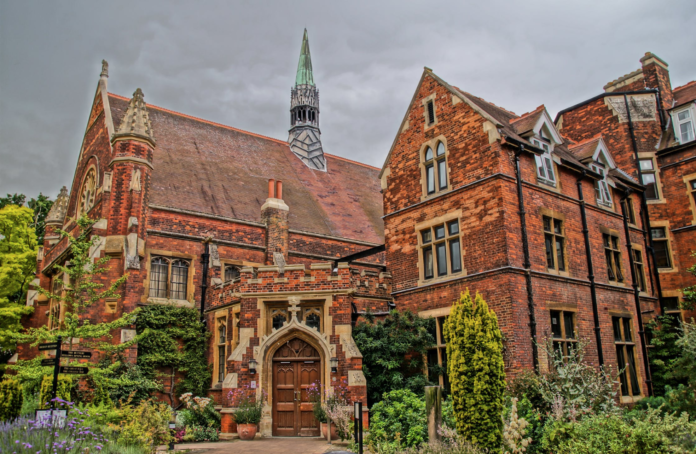The MBA is by far the most popular master’s degree in the U.S.but did you know that the MBA (Master of Business Administration) degree is only a little over 100 years old? That’s right. Businesspeople have only been earning graduate degrees in business since the beginning of the 20th century, but the changes that the degree has undergone in that relatively short period of time are quite astounding.
The Early Days of MBAs
Although the Tuck School of Business at Dartmouth College was the first school to award an advanced degree in business, the Master of Science in commerce, in the early 1900s, the first MBA degree program was actually at Harvard University. The Harvard Graduate School of Business Administration opened its doors in 1908, with 15 faculty members teaching 33 regular students and 47 special students. By 1930, more than 1,000 students were enrolled in the Harvard MBA program, which was largely based on Frederick Winslow Taylor’s theories of scientific management.
Celebrating More Than 100 Years of the MBA
The interest in business administration education in the early 20th century was spurred in large part by the industrialization of America. As changes in how people worked were taking place, there was a need for people capable of working in new capacities and to develop and meet new standards for business operations. Business leaders were looking for new ways to ensure the success of their enterprises, and that meant incorporating scientific principles of management with business practices to manage the new company hierarchies, divisions of labor and leadership needs of this new industrial landscape.
Most early business school programs focused on core competencies for running a business – what today we call the “hard” or technical skills of business management. Most B-school curriculums included courses in accounting, economics, manufacturing and production, finance, and business strategy, all topics that continue to form the foundation of a business education today.
However, what was lacking in business education in the first part of the 20th century were many skills vital to effective leadership, such as communication and personnel management. As a result, by the 1950s, many people thought that MBA degrees weren’t necessary, and were less valuable than other graduate degrees.
Changing the Focus of The MBA Degree
 One of the major complaints about MBA degrees in the mid-20th century was that the programs were “too technical;” that is, they focused too much on crunching numbers and not enough on theories related to successfully running a business. Despite the number of MBA programs expanding considerably – and spreading around the world – research by the Carnegie and Ford Foundations in 1959 concluded that an MBA degree was similar to a vocational degree thanks to its focus on technical skills and that it was too narrowly focused.
One of the major complaints about MBA degrees in the mid-20th century was that the programs were “too technical;” that is, they focused too much on crunching numbers and not enough on theories related to successfully running a business. Despite the number of MBA programs expanding considerably – and spreading around the world – research by the Carnegie and Ford Foundations in 1959 concluded that an MBA degree was similar to a vocational degree thanks to its focus on technical skills and that it was too narrowly focused.
To be truly useful, they argued, graduate business education needed to be more theoretical and give students the opportunity to do more original research and expand their skills. This marked the beginning of the modern MBA degree program, which does more to prepare students for leadership positions.
1959 was also a landmark year for women, as it marked the first year that they were permitted to enroll in MBA programs. Women were able to enroll at the Harvard-Radcliffe Program in Business Administration for their first year of business school, and then attend the Harvard MBA program for their second year. Today, women account for more than 30 percent of current MBA students.
The 1960s Brings Theoretical MBA Approach
The shift of MBA programs away from the “vocational” style education toward a more theoretical approach in the 1960s attracted more students to business programs. By 1975, it was more popular than other traditionally high-earning degrees in law and medicine. Business schools realized that teaching business from a purely scientific or quantitative standpoint was not effective and that MBAs needed to be able to solve problems using both quantitative and qualitative analysis. Solving problems by looking at them through the lens of what is known, and using established methods to meet challenges, is ineffective – and business schools needed to rise to the challenge.

And that’s what they did. From the 1960s through the 1990s, business schools focused on the theoretical, ostensibly teaching students how to think and approach problems. However, by the late 1990s and early 2000s, culminating with the economic crisis of 2007, experts began criticizing business schools, saying that they were too theoretical and that graduates lacked the technical and financial skills required for the modern business world.
It seemed that the pendulum had swung too far in the opposite direction from its earliest days, and the need for balance between the hard and soft skills was more important than ever.
The Future of the MBA Degree
In recent years, headlines have heralded the “death of the MBA,” but graduate business programs are still going strong and receiving thousands of applications every year. It appears that what’s being reported as the end of the master’s in business is really just a change, which, if you look at its history, is a regular occurrence every few decades.
 So how are MBA degree programs changing – and what will it look like in years to come? Based on research conducted by the educational research firm CarringtonCrisp, the keyword for future business studies is “flexibility.” Students want more flexibility in their graduate studies, including the option to earn an MBA in less time. Online, part-time, and executive MBA formats are also gaining in popularity, and business schools need to embrace them.
So how are MBA degree programs changing – and what will it look like in years to come? Based on research conducted by the educational research firm CarringtonCrisp, the keyword for future business studies is “flexibility.” Students want more flexibility in their graduate studies, including the option to earn an MBA in less time. Online, part-time, and executive MBA formats are also gaining in popularity, and business schools need to embrace them.
In addition, ensuring the relevancy of the MBA means fostering more collaboration, while also investing in the development of soft skills in areas such as communication, leadership, and critical thinking.
And finally, with more students turning to specialized master’s degree programs rather than MBAs, researchers expect to see increased development of specialized MBA programs, designed to meet the needs of specific industries.
Much like the business world itself, the MBA is in a constant state of flux. The MBA of today is not the same as the MBA of 100 years ago, nor will it be the same as the MBA 100 years from now.
One fact does remain, though: As long as there are businesses to be run, there will be demand for robust business education.





